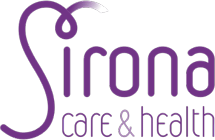UK health spending needs to grow faster than GDP
The NHS is frequently in the news about its ongoing funding crisis. New research suggests demand for health services is set to continue to grow faster than GDP per head in all developed countries around the world.
- 3rd May 2017
The NHS is frequently in the news about its ongoing funding crisis. New research suggests demand for health services is set to continue to grow faster than GDP per head in all developed countries around the world. Along with a paper about the J-value model for life-expectancy growth in industrialised countries, the research establishes a reason why people in the UK will want to spend an increasing fraction of their income on health services.
The J-value, a new method pioneered by Professor Philip Thomas from the University of Bristol, is used to assess how much should be spent to protect human life. It has been validated across 180 nations out of the 193 members of the United Nations and has now been verified against UK data for life expectancy at birth. Using the growth in the UK’s GDP per head as input, the J-value model is able to reproduce to within three months the four and a half year increase in life expectancy at birth that the UK experienced over a 20 year period – from 1985 to 2005.
The validated J-value model includes the assumption that all nations apply the same fraction of their per capita income to life extending measures at a J-value of 1.0. Less developed countries can be expected to prioritise items such as the provision of clean water and safer transport systems, and may choose to keep their spending on health care a roughly constant fraction of their GDP per head. But more highly developed countries already have a good infrastructure, and this allows their citizens to put more emphasis on extending their lives through better health care, especially as new technologies become available. The evidence supports such a conclusion, as developed nations were found to devote an increasing fraction of their per capita income to health care between 1995 and 2015. The J-value model offers no indication that the process will halt in the near future.
Even though an increase in line with GDP per head would imply a real-terms growth in health spending in expanding economies, the J-value model suggests that such a policy will not be enough to satisfy the aspirations of their people. Consequently, Governments and healthcare providers in the developed world would be advised to plan on the basis that future demand for health care services will increase faster than GDP per head.
Philip Thomas, Professor of Risk Management in the Department of Civil Engineering, and author of the research, said:
“The UK is lagging well behind France, Germany, the Netherlands and Denmark. Those countries are all spending a lot more on health care, not only in monetary terms but also as a fraction of GDP per head. For example, the Netherlands spent $5,200 per person in 2014, 10.9 per cent of GDP per head. By contrast the UK spent only $3,400 per person, 9.1 per cent of GDP per head.
“So the UK may have to cope not only with health demand that is growing faster than GDP per head but also with a significant element of catch-up. It may need to learn lessons on provision from its European neighbours.”
Papers
‘Does health spending need to outpace GDP per head?’ by Philip Thomas in Nanotechnology Perceptions
‘Corroboration of the J-value model for life-expectancy growth in industrialised countries’ by Philip Thomas in Nanotechnology Perceptions






